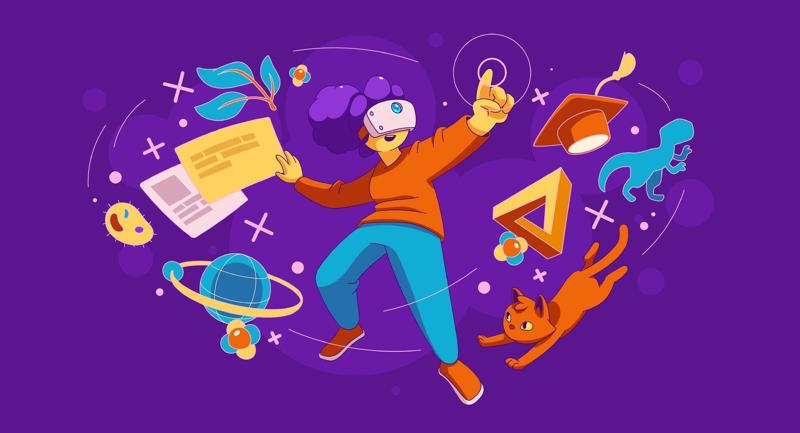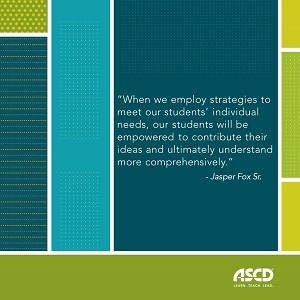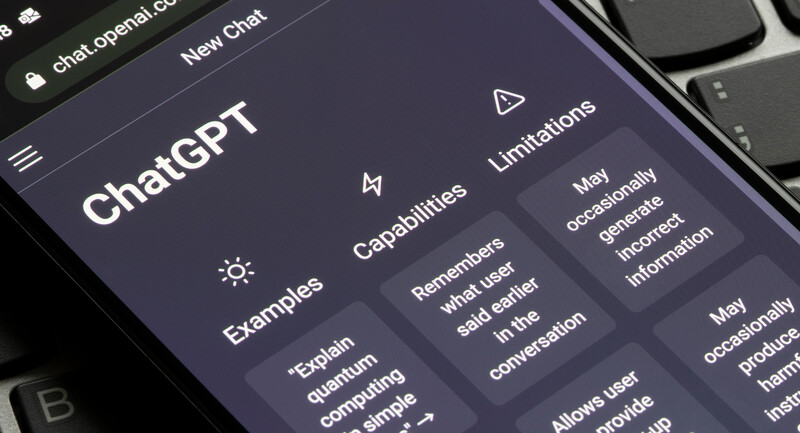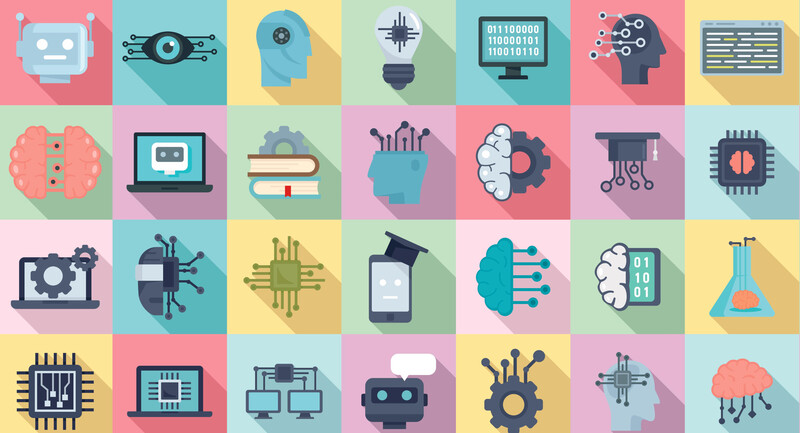The toothpaste is out of the tube! ChatGPT is here and, whether we like it or not, we can’t go back to a time before its arrival. The question now is how do we, as educators, move forward?
In case you’ve missed all the hubbub, ChatGPT is a new, advanced chatbot launched by OpenAI in November 2022 that can understand, respond to, and converse with users’ written input similarly to humans—it can even answer questions, tell stories, and engage in conversations.
Due to these advanced capabilities, it has been widely discussed and written about, particularly in the field of education, where some experts predict it could disrupt time-honored instructional practices. In fact, some of the more dire prognostications suggest that ChatGPT could irrevocably alter the way educators teach writing, assign and assess homework, and detect and monitor cheating and plagiarism.
ChatGPT itself is a neutral tool, and how it is used depends on the intentions of those who use it.
While it’s understandable that the emergence of ChatGPT has sparked such speculation, it's important to remember that technology is not inherently good or evil. ChatGPT itself is a neutral tool, and how it is used depends on the intentions of those who use it.
History has shown us that when used appropriately and with discretion, technologies generally enhance education rather than detract from it. One example is the calculator, which was initially feared to inhibit students' learning and retention of arithmetic but has proven to be a valuable tool for aiding in computational thinking. Along the same lines, we might think of ChatGPT as a "calculator for the humanities." By automating lower-order thinking tasks (like basic recall, classifications, comparisons, and summaries), students can spend more time and effort focusing on complex, conceptual tasks and developing higher-order thinking skills such as analysis, synthesis, and evaluation.
Of course, tools like calculators should be used at the discretion of the teacher. Much like students ask their math teacher if they can use a calculator on tests or homework, they may soon be asking their humanities teacher whether they can use ChatGPT on their assignments. So, how can educators help students understand appropriate uses for ChatGPT?
Embracing ChatGPT as a Teaching Opportunity
Students tend to approach new technologies through a lens of play and experimentation, seeking to uncover capabilities and limitations through trial and error. Despite the notion of students as "digital natives," it is important to recognize that students do not inherently understand how to use tools like ChatGPT for academic purposes. It’s from this perspective that ChatGPT opens opportunities for educators to teach students about these tools—to have important conversations with students about the powers, limitations, and ethical uses of advanced technological tools in education contexts.
Fear of a small minority of students misusing technology should not stop us from embracing its productive potential for the majority of learners.
As educators, our fear of a small minority of students misusing technology should not stop us from embracing its productive potential for the majority of learners. To ensure that our intrepid and well-meaning students are not misapplying ChatGPT, our aim should be to educate them on the appropriate times, reasons, and methods for using it, such as aiding in a generative brainstorm or outlining an essay. Alongside considerations of proper use, students should be taught skills—like how to corroborate information and accurately cite sources—that relate to the ethical considerations and implications associated with using ChatGPT.
Four Ways to Use ChatGPT in the Classroom
As educators, we can set up structured and secure classroom conditions that allow students to explore and experiment with AI in a hands-on learning environment. In the middle school at Francis Parker School of Louisville, where I teach, we’ve sought to do just that. We’ve experimented with various methods of incorporating ChatGPT into the classroom using lessons that give students hands-on experience to learn and test this new technology. Here’s where we’ve started:
1. Make Grammar More Dynamic
From Deep Blue to Watson, humans have relished competing with AI. Educators can tap into this motivator by using ChatGPT to help students genuinely engage in grammar lessons. By incorporating ChatGPT technology into peer collaboration and direct instruction, educators can make learning grammar a more interactive process for students.
Begin by providing your students with a piece of writing that contains numerous grammatical errors. Have students collaboratively edit this piece of writing through a student-facilitated, classwide discussion format, such as a Socratic seminar approach.
Next, take the original piece of writing and input it into ChatGPT to be edited. As ChatGPT provides its corrections, have the class work in small groups to critically review and evaluate the program’s responses. In these groups, students should discuss the accuracy of ChatGPT's corrections, including points of divergence and convergence between their own edits and those of the AI.
At the end of the lesson, bring the class back together and provide a period of corrective instruction. During this time, focus on comparing and contrasting your students’ output with ChatGPT’s. This period of corrective instruction can help students digest grammatical issues as well as better understand both the capabilities and limitations of the technology. This activity creates a dynamic, interactive grammar lesson that allows students to learn from their peers, AI, and from you—and it’s an approach to teaching that leverages moments of incongruity, which have been proven to result in information being more deeply embedded in students’ long-term memory.
2. Create Study Guides
Designing effective study guides that meet the needs of each student can be a challenge for teachers. At the same time, if students create their own study guides, they may not be well-organized or necessarily accurate. ChatGPT can help address this problem by generating study guides that are customized to students’ needs.
As just one example, a teacher could choose a piece of student writing, enter it into ChatGPT, and have the tool generate a customized guide about writing skills the student could work on. A guide like this could include summaries of key concepts, recommended resources, and practice prompts. In this way, educators can use ChatGPT to generate an individuated response to a student’s work that not only addresses areas to improve but provides materials that further student learning.
As with the grammar lesson, AI-generated study guides offer opportunities for student engagement and interaction. Students could use the study guide in a dialogic manner, asking ChatGPT follow-up questions that can further customize the guide based on the individual needs and abilities of each student.
ChatGPT saves teachers the time of generating materials from scratch and can help tailor assessments, guides, and feedback to what students most need.
Next, teachers can conference with students to corroborate the veracity and accuracy of student exchanges with ChatGPT. In this way, ChatGPT creates a responsive and adaptable study guide, helping students to deepen their understanding while lessening the burden on teachers to have to create all learning materials.
As a further step, ChatGPT can generate practice exams and quizzes that are similar in format and difficulty to the actual exams students will be taking. A teacher could enter an exam on any topic into ChatGPT, and ChatGPT will generate a practice test drawn from the information it’s been given. Again, this saves teachers the time of generating materials from scratch and can help tailor assessments, guides, and feedback to what students most need.
3. Flip the Classroom
After three years of pandemic learning, it is more important than ever for teachers to foster a sense of community and connection in classrooms. One way to do this is by incorporating more collaborative elements into classes, which is where the flipped-classroom approach can be effective. A flipped classroom allows students to learn new material independently and then come to class ready to engage in interactive activities.
By leveraging ChatGPT’s generative abilities described above, teachers can create adaptable content for a flipped classroom approach. One example of this approach would be for a teacher to introduce a topic in class and have students spend class time developing a viable and specific research question relating to that topic.
For homework, students could then input their questions into ChatGPT to generate a tailored response that lets students drive their own research. Rather than relying on a curated selection of resources provided by the teacher or sifting through pages of information on Google that may or may not be relevant to students’ research needs, ChatGPT can better respond to students’ specific research interests. ChatGPT helps students get straight to the relevant information, streamlining the information-gathering process so that students can spend more time and effort analyzing information and digging deeper into aspects of it that spark their interest.
For example, a student might be interested in studying the impact of social media on politics. They could input this broad topic into ChatGPT to gather a wide range of information and data quickly. Then, they could immediately pivot to higher-order thinking tasks, like analyzing ChatGPT’s outputs and digging deeper into subtopics: how social media platforms are used to influence public opinion, the role of social media in political campaigns, or the impact of social media on political polarization, for instance. By automating the initial information collection process, ChatGPT allows the student to develop skills in analyzing research materials, vetting resources, identifying patterns of information, and drawing their own conclusions about a topic. In preparation for the next day’s class, the student could then synthesize these in-depth findings and prepare a presentation to share their research with classmates.
When students share their summary with the rest of the class during the next lesson, they’re presenting information that is better tailored and more relevant to their specific angle on the classwide topic. As each student shares their findings, the entire class gains a deeper, richer, and more diverse understanding of the topic represented from multiple unique perspectives.
Navigate the World of Artificial Intelligence and ChatGPT
Dive deeper into AI and learn how to navigate ChatGPT in schools with curated resources and tools from ASCD and ISTE (International Society for Technology in Education).
Dive deeper into AI and learn how to navigate ChatGPT in schools with curated resources and tools from ASCD and ISTE (International Society for Technology in Education).
4. Build Information-Literacy Skills
Information literacy is one of the most important skills for students to develop. With the vast amount of information available online, it's crucial for students to be able to evaluate sources critically, differentiate between credible and unreliable sources, and effectively use technology to access and analyze information. Developing information literacy skills not only helps students succeed academically, but it also better prepares them for future careers and personal lives impacted by ever-evolving technologies.
ChatGPT can be a valuable tool to help teachers build information literacy skills in the classroom. One example lesson builds directly onto the flipped-classroom approach. After students have used ChatGPT to generate a response tailored to their research question, teachers could use this moment to show students how to evaluate the validity, credibility, and veracity of the AI-generated information. The CRAAP test is one helpful evaluation tool to help students assess whether online sources are current, relevant, authoritative, accurate, and purposeful.
The teacher can then have students work in small groups to use databases to evaluate and compare the information generated by ChatGPT with existing online sources. Much like the grammar lesson, this process helps students recognize moments of incongruity and flag those moments, which they can then assess for credibility, helping students learn how to identify potential biases and inaccuracies in online information.
Used appropriately and with imagination, ChatGPT has the potential to augment, enhance, and enrich students’ educational experiences.
"Transformational Potential"
The four uses mentioned above are just starting points. As educators continue to explore and integrate ChatGPT into the classroom, we’ll discover a multitude of ways it can be better utilized to meet the unique needs of our students. Used appropriately and with imagination, ChatGPT has the potential to augment, enhance, and enrich students’ educational experiences. But ultimately, its transformational potential will only be realized if educators choose to embrace and integrate this technology into schools, classrooms, and lessons.
The toothpaste is out of the tube, and it’s futile to try to get it back in. Instead, let’s focus on how we can leverage ChatGPT to improve teaching and learning.








